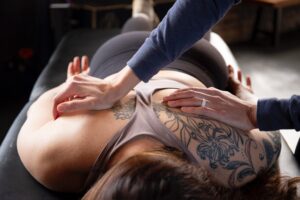
Unleash Your Inner Athlete
Speed. Agility. Power. We understand their importance for sport, but those days are over, right?

Speed. Agility. Power. We understand their importance for sport, but those days are over, right?

Shoulder mobility – it’s a hot topic in the fitness community. If you don’t have

As bipedal beings, our feet are the literal foundation for our movement. They absorb ground

Injury. It is the quickest way to stop you dead in your tracks with your

Most people hear the word “concierge” or “cash-based” and think to themselves, “Yeah this option

Medial Epicondylitis (“Golfer’s Elbow”) is a common pathology seen in a variety of activities. Baseball,

Is clicking around Your shoulder always bad? Let’s set the stage… You’re just finishing a

What is regional interdependence? “The concept that seemingly unrelated impairments in a remote anatomical region

What is manual therapy? Manual therapy is a common term thrown out in the physical

Non-specific low back pain is one of the leading causes of disability in the world

What is the facet? The facet joints are the connections from each vertebral segment of

What is the disc made of, and why is it important? The discs are structures

Unfortunately as the aging process continues, breakdown of joint surfaces and gradual degenerative changes begin

As physical therapists working with active individuals (often times in the gym setting), we see

As a physical therapist, I spend my days helping active individuals not only recover from
